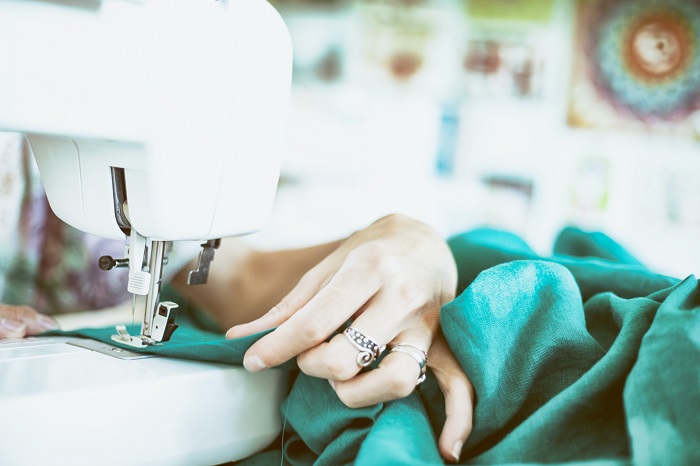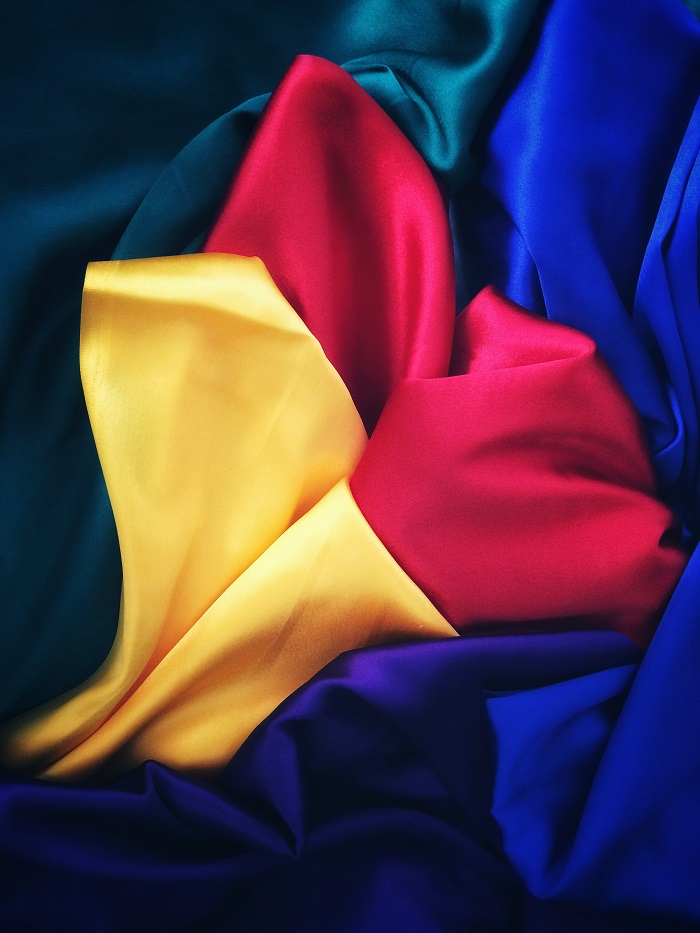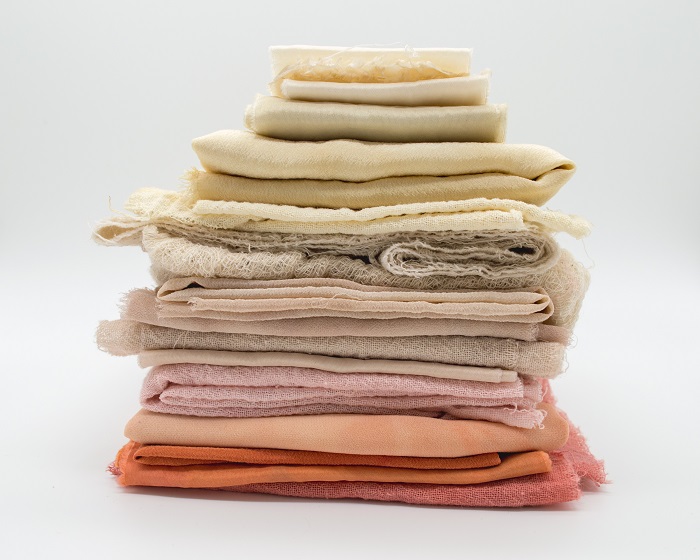
A Wealth of Designer Fabrics Online
The term textile fibers refers to fibers that can be spun into yarn or made into fabric by such operations as weaving, knitting, braiding, and felting. Weaving, one of the first crafts, was practiced as early as the New Stone Age, as evidenced by fragments of flax fibers found in the remains of lake dwellings in Switzerland. In ancient Egypt, the earliest textiles were woven from flax; in India, Peru, and Cambodia, from cotton; in the southern European area, from wool; and in China, from silk. Fabrics from all around the world are available today at a variety of websites. Just one that features all types of fabrics is Hancock Fabrics, a noted retail merchant that now has its numerous designer fabrics available to you on its colorful website. Distinctively designed fabrics from Laurie Smith, Lauren Hancock, and also Waverly decorating fabric is only a click away. Whether you’re looking for cotton, linen, wool or silk, you’ll be able to go online and find exactly the designer fabric of your choice. There’s also a wide selection of synthetic fabrics that will amaze you by their beauty and practicality.
The beauty and value of silk stimulated many early scientists to attempt to develop fiber resembling the thread of the silkworm. In 1664 the English scientist Robert Hooke suggested the possibility of synthesizing a glutinous substance similar to the fluid secreted by the silkworm when it spins its cocoon. Not until 200 years later, however, was the commercial production of manufactured fibers, originally named artificial silk, launched by the French scientist Count Hilaire de Chardonnet. His process, which followed the principle suggested by earlier chemists, consisted of forcing a viscous fluid through small thimble like nozzles called spinnerets and hardening the fluid into thread by coagulation in a chemical bath. This process continues to be the basic method that is used for the production of synthetic textile fibers.

In 1924 the term artificial silk was replaced by the more definitive name rayon, which in 1937 was officially recognized in the U.S. by the Federal Trade Commission as the generic term for the new fiber. Subsequently, two major processes used in rayon production led to the classification of rayons into two distinct categories, viscose rayon and acetate rayon. After 1940 many other synthetic fibers achieved importance in the textile industry, including the polyesters, sometimes called dacrons, polyvinyls, polyethylenes, acrylics, and olefinsA silk like nylon known as Qiana was introduced in 1968. Fabrics made of Qiana resist wrinkles, retain creases and pleats, and have good color clarity and stability when dyed.
The use of synthetic fibers brought many changes in the textile economy, because production methods and the physical characteristics of these fibers could be adjusted to suit specific requirements. Highly industrialized nations that previously had been forced to import cotton and wool as raw materials for textiles were able to manufacture their own fibers from such readily available resources as coal, petroleum, and wood pulp. The development of synthetic fibers led to the production of new types of durable and easily cared-for fabrics. The above information was supplied by Microsoft® Encarta® Online Encyclopedia 2005.
Hancock Fabrics is an excellent source for fabric, sewing patterns, and sewing supplies. Whatever sewing needs you have – whether you are looking for quilting fabric, decorator fabric, upholstery fabric, silk fabric, or simple sewing tools, Hancock Fabrics has your needs sewn up! It’s like visiting several online merchants all neatly wrapped up in one easy to navigate site.
On its website you can shop for Waverly fabric, Mundial scissors, sewing machines, thread, Lion Brand yarn, patterns, notions and much more! Hancock Fabrics is also your fleece fabric headquarters with licensed fleece featuring Colleges & Universities, Major League Baseball, the National Football League, military services, Spiderman, Betty Boop, ~Did you know that although cotton is the most common textile fiber now in use, it was the last natural fiber to attain commercial importance? In the 5th century BC the Greek historian Herodotus reported that among the valuable products in India was the wild plant that bears fleece as its fruit. In the following century cotton was introduced from India into Greece by Alexander the Great. Although the early Greeks and Romans used cotton for awnings and sails as well as for clothing, it was not adopted for widespread use in Europe until centuries later.

In the New World, the Mexicans used cotton for weaving in the pre-Columbian period. Cotton textiles were found in the West Indies and in South America by explorers in the 15th and 16th centuries. Cotton was cultivated by the early American colonists, and after the introduction of the cotton gin, invented in 1793 by the American inventor Eli Whitney, cotton became the most important staple fiber in the world for quantity, economy, and utility. Cotton is now one of the top choices for decorator fabric. It is available in such a wide variety of colorful patterns and intricate designs that it is used not only for clothing, but for so many other things—like throw pillows, quilts, curtains and so much more. Its durability is legend and its comfort is unsurpassed. Go online to find a vast source of this wonderful decorator fabric. You’ll be sure to find just the right design for your needs. Hancock Fabrics is an excellent source for fabric, sewing patterns, and sewing supplies. Whatever sewing needs you have – whether you are looking for quilting fabric, decorator fabric, upholstery fabric, silk fabric, or simple sewing tools, Hancock Fabrics has your needs sewn up! It’s like visiting several online merchants all neatly wrapped up in one easy to navigate site. On its website you can shop for Waverly fabric, Mundial scissors, sewing machines, thread, Lion Brand yarn, patterns, notions and much more! Hancock Fabrics is also your fleece fabric headquarters with licensed fleece featuring Colleges & Universities, Major League Baseball, the National Football League, military services, Spiderman, Betty Boop, Hello Kitty, NASCAR, Dora the Explorer and many more novelty and fleece solids. What could be easier than finding all this merchandise at one convenient site?Did you know that although cotton is the most common textile fiber now in use, it was the last natural fiber to attain commercial importance? In the 5th century BC the Greek historian Herodotus reported that among the valuable products in India was the wild plant that bears fleece as its fruit. In the following century cotton was introduced from India into Greece by Alexander the Great. Although the early Greeks and Romans used cotton for awnings and sails as well as for clothing, it was not adopted for widespread use in Europe until centuries later.
In the New World, the Mexicans used cotton for weaving in the pre-Columbian period. Cotton textiles were found in the West Indies and in South America by explorers in the 15th and 16th centuries. Cotton was cultivated by the early American colonists, and after the introduction of the cotton gin, invented in 1793 by the American inventor Eli Whitney, cotton became the most important staple fiber in the world for quantity, economy, and utility. Cotton is now one of the top choices for decorator fabric. It is available in such a wide variety of colorful patterns and intricate designs that it is used not only for clothing, but for so many other things—like throw pillows, quilts, curtains and so much more. Its durability is legend and its comfort is unsurpassed. Go online to find a vast source of this wonderful decorator fabric. You’ll be sure to find just the right design for your needs.
